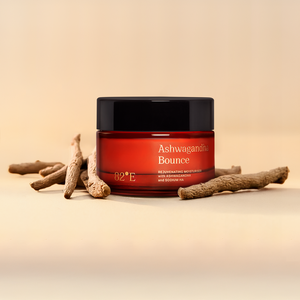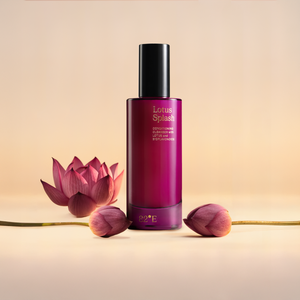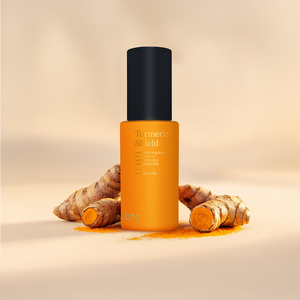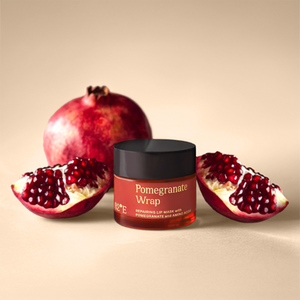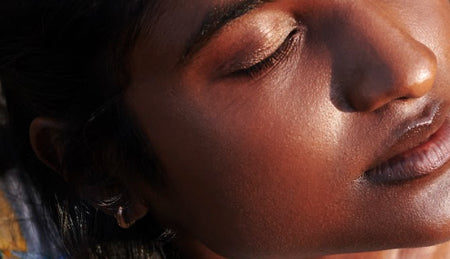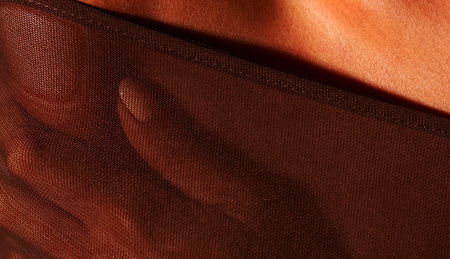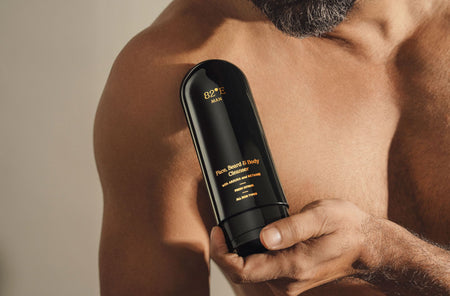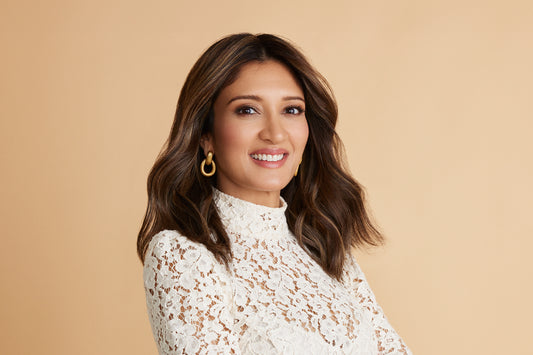
Falling for common myths and misconceptions can be risky when caring for an area as delicate and sensitive as your under-eye skin.
We sat down with Dr. Jaishree Sharad, an internationally renowned, board-certified dermatologist, Medical Director of Skinfinitii Aesthetic & Laser Clinic, TEDx speaker and author of The Skincare Answer Book, Skin Rules, Skin Talks. She debunks some of the common myths and misconceptions related to under-eye skincare.
Dr. Jaishree Sharad: There are several misconceptions about under-eye skincare. Practising the wrong kind of skincare or treatments for the under-eye area can even cause skin damage. Here are some common myths:
Myth: Moisturiser can remove wrinkles
Fact: Moisturisers are not a substitute for targeted anti-aging products like retinoids, which are clinically proven to stimulate collagen production and reduce the appearance of wrinkles over time.
However, some moisturisers contain ingredients like hyaluronic acid, peptides, or antioxidants that can provide additional benefits for the skin, such as promoting collagen production or protecting against environmental damage. Regular use of a moisturiser can help maintain the skin's natural moisture barrier and prevent further moisture loss, which can contribute to the development of wrinkles over time. Well-hydrated skin is generally more resilient and better able to resist the formation of new wrinkles.
Myth: Dark circles under the eyes cannot be treated
Fact: Just as there are different causes of dark circles, there are various options to treat them. Dark circles and hollows under the eyes inherited from your parents could be difficult to treat. Otherwise, dark circles are treatable once the underlying cause is
identified. Dark circles under the eyes are best treated through a combination of cosmetic treatments, a healthy lifestyle, and quality skin care products. Topical eye creams containing vitamin C, caffeine, vitamin K , licorice, kojic acid help to reduce dark circles when used for 8 to 10 months. In-office treatments, such as peels, Pico lasers, and Q-switched Nd Yag lasers help to reduce dark circles. For sunken eyes which cast a shadow and give an impression of dark circles, under-eye fillers are very effective. The key is to go to a well-trained injector.
Myth: More sleep will cure your under-eye hollows
Fact: While getting adequate sleep can help reduce dark circles under the eyes, it is by no means the solution to hollow eyes.
Under-eye hollows occur due to :
Genetic Factors like Facial Bone Structure: The contour and shape of your facial bones are primarily determined by genetics. In some individuals, the bone structure around the eye area may naturally have a concave or sunken appearance. This genetic predisposition can create the appearance of under-eye hollows, even in younger people.
Aging Processes like Bone Resorption: As people age, there is significant bone resorption, which is the loss of bone density and volume of the bone. This natural process can affect the bones around the eye area, making them appear more prominent and contributing to the formation of under-eye hollows.
Fat Loss: Another factor that plays a significant role in under-eye hollows is the loss of subcutaneous fat. This fat provides volume and support to the skin, making it look full and youthful. Over time, the fat pads under the eyes can diminish or shift, leading to a sunken or hollow appearance.
Combination of Factors: Under-eye hollows are often the result of a combination of factors, including genetics, bone structure, fat loss, and changes in skin elasticity. In some cases, individuals may have genetically concave bone structures, which, when coupled with age-related bone resorption and fat loss, can result in more noticeable hollows.
Myth: Surgery is the only effective option
Fact: Dark circles and sunken eyes are caused by a loss of volume in the skin tissue under the eyes. Therefore, non-surgical treatment options such as dermal filler injections provide an effective and safe way to treat any hollowness under the eye area. Hyaluronic acid filler is a simple, non-surgical, 15-minute procedure (colloquially called “lunch-time procedure”) with minimal downtime. And as with most fillers, results can be seen almost immediately. The filler will restore the lost volume under the skin, plumping up the sunken areas and restoring contour to the eye area. The effect lasts for up to 1.5 years. Again, the ideal treatment will vary from person to person and one needs to be assessed by a dermatologist.

Dr. Jaishree Sharad
Myth: Home remedies can eliminate dark circles
Fact: There are many home remedies and creams that claim to be able to eliminate dark circles.
Cold cucumber slices, green tea bags which contain anti-oxidants like tannins and flavonoids, and cold compression (with an ice pack or a frozen spoon), can constrict the prominent blood vessels and temporarily improve the appearance of dark circles. But that's about it. The solution to dark circles under the eyes depends on first identifying the cause. Simply using home remedies and creams will not provide a permanent cure for under-eye bags or pigmentation.
Myth: Only ageing causes dark circles
Fact: The skin under the eyes is one of the thinnest and most delicate areas of the human body. Therefore, dark circles can be caused by a variety of factors.
These include:
- Lack of sleep
- Low haemoglobin
- Eye allergies
- Allergies to eye cosmetics
- Allergy to fragrance
- Insulin resistance
- PCOS
- Hypothyroidism
- Smoking
- Stress
- Constant rubbing of eyes
- Excessive sun exposure
- Exposure to blue light from laptops and cellphones
Ageing is just one of the causes of dark circles and under-eye hollows. This is why even young people in their early twenties also complain of dark circles under their eyes!
Myth: Getting more sunlight will alleviate dark circles
Fact: Many people mistakenly believe that more sunlight exposure can improve the appearance of dark circles. However, this is not true. Too much sun exposure actually makes it more susceptible to dark circles as a result of the accumulation of pigment melanin under the eyes. Because of this, it is best to protect the skin around your eyes by applying sunscreen and shielding your eyes by wearing protective eyewear or a hat when outside.
What advice would you give someone who is just beginning to care for under-eye skin?
Dr. Jaishree Sharad: Caring for the delicate skin under your eyes is essential to maintain a youthful and healthy appearance.
- Gentle Cleansing: Use a mild, hydrating cleanser to clean your face and the under-eye area. Remove makeup using a gentle cleanser. Avoid harsh scrubbing or rubbing, as the skin in this area is delicate.
- Hydration: Keep the under-eye area well-hydrated. Use a gentle, fragrance-free eye cream or a moisturizer formulated for the under-eye area. Look for ingredients like hyaluronic acid to lock in moisture.
- Sunscreen: Apply a broad-spectrum sunscreen with SPF 30 or higher every morning, including on the under-eye area. UV radiation can accelerate skin aging, causing wrinkles and pigmentation, so sun protection is crucial.
- Avoid Rubbing: Be gentle when applying and removing makeup or skincare products. Avoid rubbing or pulling on the skin around the eyes, as this can lead to irritation and contribute to the development of fine lines.
- Eye Creams: Consider using an eye cream with ingredients like peptides, antioxidants, and vitamin C to address specific concerns like fine lines and dark circles. Different eye creams may be suitable for daytime and nighttime use.
- Sleep: Aim to get sufficient sleep to minimize puffiness and dark circles. Lack of sleep can make under-eye concerns more noticeable.
- Lifestyle Factors: Maintain a healthy lifestyle by drinking enough water, eating a balanced diet rich in antioxidants, and managing stress. These factors can positively impact your skin's overall health.
- Avoid Smoking: Smoking can accelerate the aging process and lead to premature wrinkles, including those around the eyes.
- Consult a Professional: If you have specific under-eye concerns, such as severe dark circles or deep wrinkles, consider consulting a dermatologist or skincare professional. They can recommend personalized treatments or procedures tailored to your needs.
- Patience: Results from skincare products and treatments may take many months to become visible. Be patient and consistent with your skincare routine.

